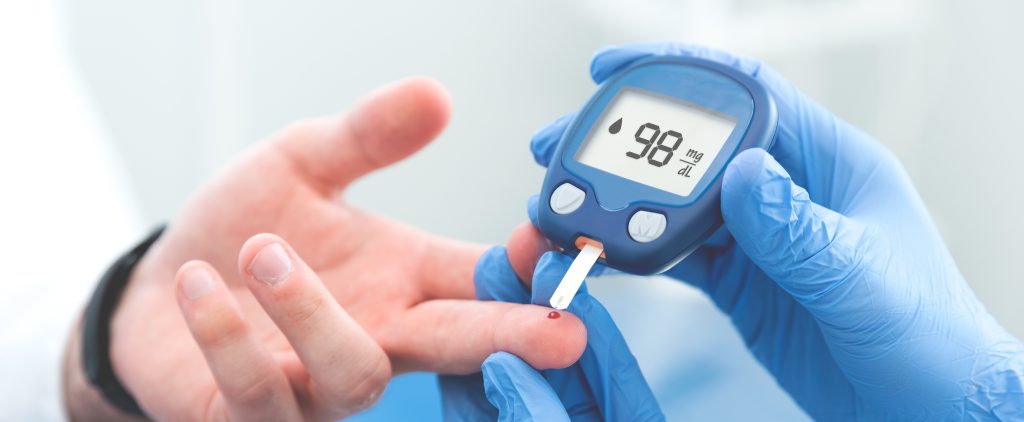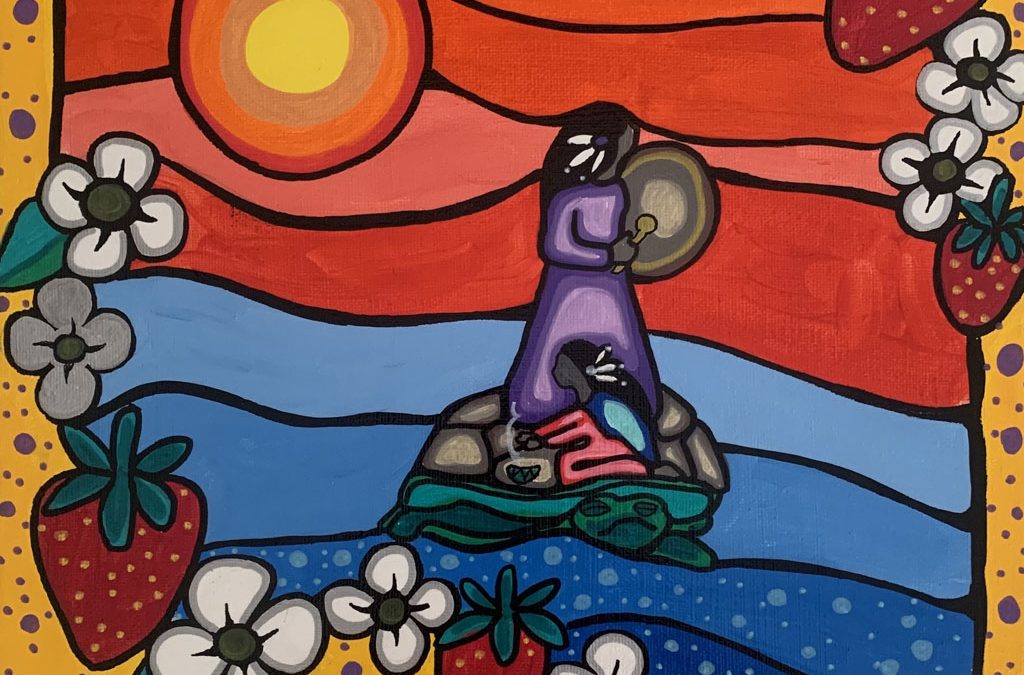Introduction
“Diabetes mellitus” (DM) refers to a group of diseases, which includes Type 1 Diabetes Mellitus (T1DM), Type 2 Diabetes Mellitus (T2DM), and Gestational Diabetes Mellitus (GDM). Across the world, rates of DM are increasing. In 2021, it was reported that approximately 537 million individuals were affected by DM globally, constituting roughly 10.5% of the world’s population, with projections suggesting diabetes cases could surge to 783 million by 2045. DM is a major public health problem that is approaching epidemic proportions on a global-scale. The increase is largely due to the rise in diagnosed cases of T2DM. In the past three decades, the prevalence of T2DM has risen dramatically in countries of all income levels. Despite the Indigenous population of Canada being the youngest in Canada, it bears the burden of several chronic diseases, with the most devastating being DM. The rate of T2DM among Indigenous Peoples is approximately 3-5 times higher than the rest of the Canadian population.
What is Type 2 Diabetes Mellitus?
“Diabetes” refers to a group of chronic diseases that occur either when the pancreas does not produce enough insulin or when the body becomes resistant to the insulin it produces. Insulin is a hormone that regulates blood glucose. Raised blood glucose or raised blood sugar, is a common effect of uncontrolled diabetes. Over time this is associated with damage in many of the body’s systems, such as the kidneys, heart, eyes, nervous system, limbs, and other organ systems.

T2DM is a metabolic disorder that typically has a gradual onset, and is often present with other health challenges, including high blood pressure, high levels of harmful lipids (fats) in the blood, and obesity (which together constitute Metabolic Syndrome). There is a general conception that the onset is caused by surplus glucose in the blood. The imbalance leads to cells throughout the body becoming resistant to the effects of insulin, resulting in glucose and insulin hormones in the blood increasing. The cause of this “turning point” is highly complex and multiple socio-economic influences (low physical activity, eating habits, socio-economic status, mental health conditions, etc.) are believed to be factors, thereby making T2DM a highly complex biomedical, social, and economic disease.
The lasting implications of T2DM on the health and well-being of people living with the chronic disease are vast, including comorbid conditions such as kidney failure and increased risk of heart and stroke. At age 50, life expectancy is six years shorter for people with T2DM than for people without diabetes.
Indigenous People and T2DM
The prevalence rate of DM in Canada is 9.4%, with approximately 3.7 million people in Canada living with diagnosed DM as of 2021. It is recognized that DM varies in prevalence among different ethnic populations in Canada, and among Indigenous Peoples, the rate of DM is one of the highest in the country.
The prevalence of T1DM and T2DM in Indigenous populations, based on 2022 data, is as follows:
- 17.2% among First Nations individuals living on-reserve,
- 12.7% among First Nations individuals living off-reserve,
- 4.7% among Inuit, and
- 9.9% among Métis people, compared to 5.0% in the general population.
Other data indicates T2DM among Indigenous children is growing at an alarming rate. In 2020, the incidence rate of T2DM among Indigenous children and youth in Manitoba was 154.6 per 100,000, compared to 6.1 per 100,000 among all other children and youth during the same period. Indigenous children and youth are also more frequently diagnosed with chronic kidney disease (CKD), which normally develops in adults after living with T2DM as a chronic condition.

Rising rates of T2DM in Canadian Indigenous populations have become a major point of concern among Indigenous nations and groups. Researchers and medical professionals are calling for the reassessment and modification of healthcare systems and services that deliver DM care for Indigenous Peoples.
The Link Between T2DM Prevalence in Indigenous Populations and Colonialism
Experts in the field continue to examine the link between the historical and continuing effects of colonialism and the prevalence of T2DM in Indigenous populations. The negative impact of colonialism on Indigenous health and wellness is a well-recognized phenomenon, demonstrated in the social and economic barriers that Indigenous Peoples more often experience than non-Indigenous groups in receiving healthcare.
An example of how colonization has a direct impact on the rate and experience of T2DM for Indigenous Peoples is through the underserved nature of the colonial-based reserve system. Reserves and remote communities in Canada, where many Indigenous Peoples and First Nations call home, are greatly under resourced in sufficient and healthy food supplies as well as reliable medical services, two necessary components of effective care when managing T2DM and prediabetes. The reserve system, an ongoing product of colonization, maintains the barriers that Indigenous Peoples living on-reserve or remotely experience in accessing essential T2DM care programs and services.
Pathways Forward
Indigenous leaders and researchers describe the necessity for an Indigenous-based approach to DM care to help lower rates among Indigenous Peoples. Below is a selection of practices, or wise practices, that are currently being considered as potential pathways forward in Indigenous-led T2DM care:
Culturally Relevant and Safe Care
People living with T2DM require regular care visits with a health care provider for prescription refills, general monitoring, or help with possible comorbid conditions related to one’s T2DM (i.e., kidney dialysis, foot checks, blood pressure checks). Encounters with healthcare professionals have been reported as being a point of discomfort, miscommunication, and racism. Creating a culturally relevant and safe space for Indigenous Peoples in their T2DM care routines is an important means towards in achieving better care for Indigenous populations.

Education and Awareness
Indigenous health and wellness is understood as a wholistic approach to life and a fundamental part of establishing balance, or mino-pimatisiwin. Advocates suggest the need for better and more culturally relevant education programming and awareness around DM to achieve balanced health and wellness for Indigenous Peoples. Education is paramount in improving health and Traditional Ecological Knowledge (TEK) is an essential aspect of Indigenous education systems. Incorporating traditional cultural practices around health, wellness, food, and physical activity have been identified as an effective means for creating lasting change in T2DM care and prevention in Indigenous populations, particularly for children and youth.
A Distinctions-based Approach
Health policies in Canada have historically been created for Indigenous People using a pan-Indigenous approach, often without their perspectives or insights. A movement in Indigenous healthcare policies to adopt “distinctions-based pathways” is growing. The distinctions-based approach can be understood as “the idea that Indigenous Peoples are not a homogenous group,” a concept, if adopted, which could have lasting and drastic implications for the relationship between Indigenous Peoples and government bodies going forward. Recognizing that Indigenous groups, nations, and communities are varied and unique, it becomes possible to create tailored changes within T2DM care for Indigenous Peoples.
A Framework for Diabetes Care
In June of 2021, The National Framework for Diabetes Act received royal assent, creating a national strategy for diabetes care, practices, and expectations across Canada. Supported by an intersectional lens, this framework was created through engagements with Indigenous Peoples, speaking to a new and hopeful pathway forward in the future of diabetes care for Indigenous populations. Already actioned in various ways by several provinces and territories, the framework raises awareness of the importance of DM while creating resources for better and more effective care.
Canada is committed to advancing further efforts to support improved access to diabetes prevention and treatment to ensure better health outcomes for Canadians. Further engagement with stakeholders is planned to advance health equity, encourage innovation, and build collaborative mechanisms. Next steps include an Indigenous-led engagement process on diabetes to acknowledge the voices, interests and unique perspectives of Indigenous communities and support their plans to address diabetes in their own communities.
Concluding Thoughts
Reducing T2DM among Indigenous Peoples requires culturally grounded, community-led approaches that recognize the lasting impacts of colonialism. By centring Indigenous knowledge and distinctions-based care, prevention and treatment can become more effective and equitable. Collaboration between Indigenous communities, healthcare providers, and governments is key to building healthier futures.










Share the article